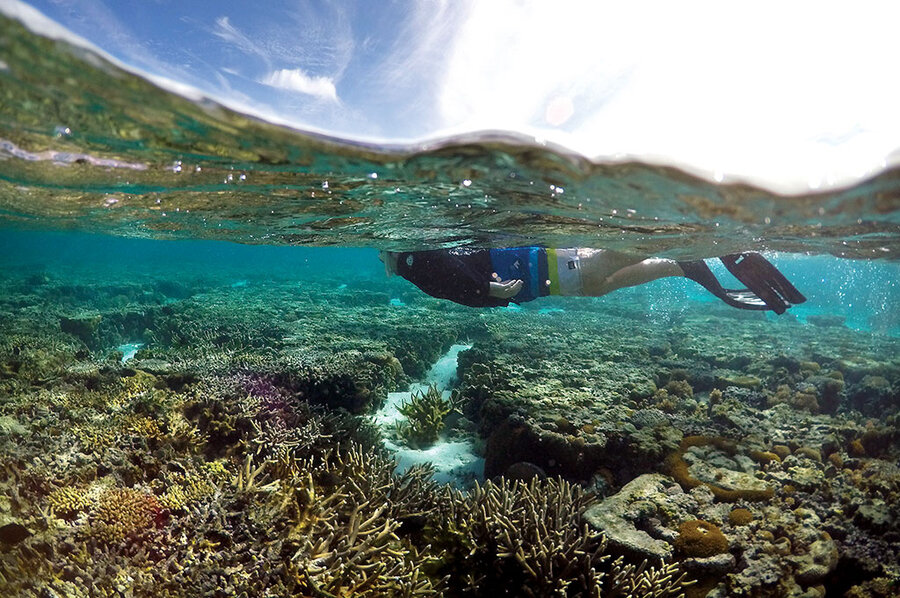My debt to ‘Sea Hunt,’ and to my dad
My dad was never a fan of the kind of evening TV programs that entertained us kids in the 1950s and early ’60s. While we settled down to our weekly favorites – “Leave It to Beaver,” “Lassie,” and “Dennis the Menace,” to name a few – he’d relax with his newspaper, oblivious to the shows that held us rapt. There were some exceptions, of course, programs he’d be loath to miss. The nightly news was sacrosanct to him, and the daily signoff between NBC’s Chet Huntley and David Brinkley after they delivered the news still rings in my ears all these years later:
“Goodnight, Chet.”
“Goodnight, David.”
“And good night from all of us at NBC News.”
It signaled a rite of passage from his time with the old black-and-white RCA television to ours.
But there was one series he almost never missed, and loved to have me watch with him: “Sea Hunt.” It was an action-adventure drama starring actor Lloyd Bridges as a former US Navy frogman who risked his life week after week exploring, filming, harvesting, and simply appreciating marine environments and depths wherever his diving expertise was needed.
A crisis or mystery was usually involved, of course. The stalwart main character Mike Nelson caught smugglers, prison escapees, and counterfeiters. He rescued children from coastal caves with tidewaters pouring in, and saved a pilot who’d crash-landed into the sea – not to mention the obligatory bikini-clad damsels in distress (Dad? Dad?). One week, Mike even brought up a dog that was about to drown in a sunken freighter by ingeniously improvising an air pocket in a kettle from the submerged galley.
It was not, I realized years later, so much the plots that my dad found so engaging, but the underwater environments that the series portrayed, as well as the science and technology woven into the stories. Dad was fascinated by both. When I was older, he gave me two of Rachel Carson’s classics about the sea – “Under the Sea Wind” and “The Sea Around Us,” both well-thumbed by him – and encouraged me to read them. But when we shared “Sea Hunt,” I was too young to appreciate much more than what the drama’s narration provided.
Ah, reruns. I recently revisited a few episodes of the series via YouTube. They popped up in a “suggested” watch queue after I’d indulged in a movie with Jeff Bridges (one of Lloyd’s two actor sons, along with Beau). Why not revisit my dad’s favorite old show? In fact, I ended up binge-watching it for the better part of a rainy day.
Now I appreciated Lloyd Bridges’s ruggedly handsome physique in a way I hadn’t before. And I found other well-known actors in some of their earliest roles: Leonard Nimoy, Larry Hagman, Bruce Dern, Jack Nicholson, and Barbara Eden (another favorite of Dad’s, which reminds me that he also rarely missed “I Dream of Jeannie”). And, oh, my, even Jeff and Beau as young boys – what an unexpected treat!
But watching the series will never be quite the same as it was in the old days, with Dad in his easy chair, and my innocent focus – like his, most of the time – on the fascinating marine environments and what was then state-of-the-art scuba, photographic, and surveillance equipment (and oh, that kelp harvester one week!). It was something we enjoyed with complete abandon as we descended with Mike into an enthralling and often treacherous world below the surface of the sea.
Though the series didn’t inspire me to become a scuba diver, it had an impact, and I took to the Caribbean with snorkel and mask several times as a graduate student studying reef ecosystems. And one day a vision worthy of the series’ soulful glimpses of oceanic life materialized directly below me in the form of a giant manta ray. The graceful winged fish posed no threat, I knew, as it briefly and completely blocked my view of the bottom in passing. I could almost hear Mike’s narrative description of the animal as a pelagic filter feeder that could grow to seven meters across. This one was close to that.
Dad should have been there.







